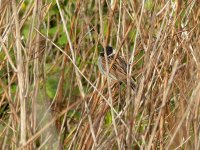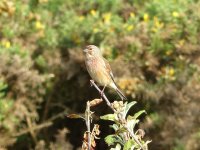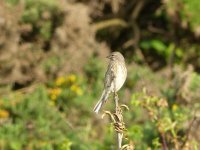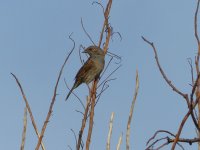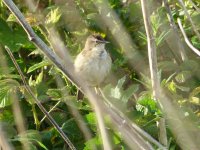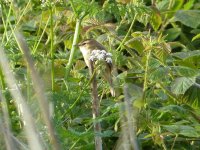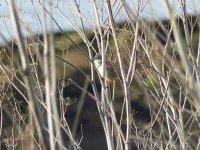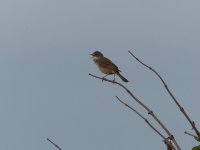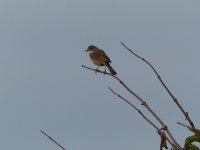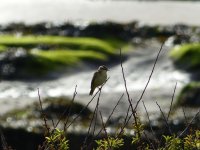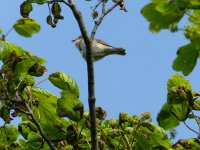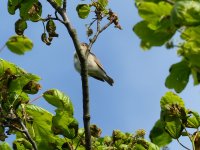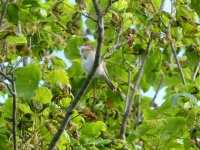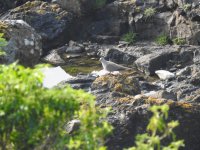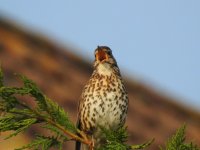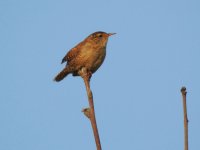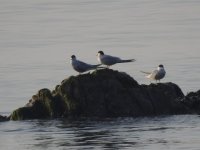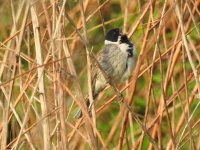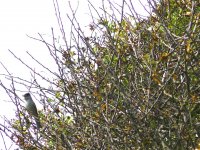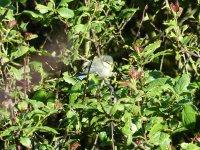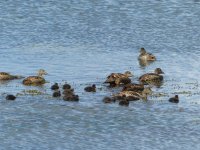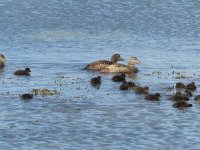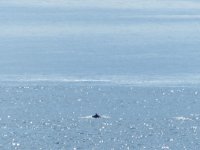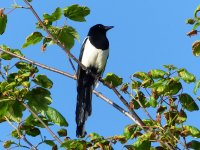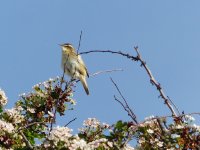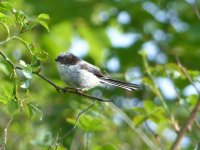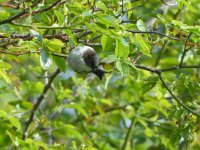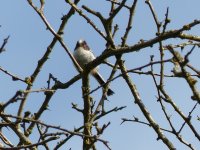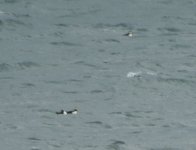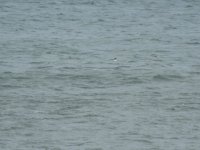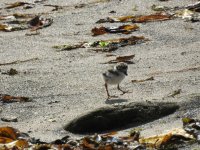A new bird.
Spent twenty five minutes at the back of Lime Kiln Beach, peering into a thick clump of mixed scrub from which was emanating a rich, melodious bird song. I think maybe Blackcap, but the performer steadfastly refused to come out for a bow. I'll be revisiting that clump in the days to come.
I had returned to the strip this morning to get a few record photos of the Whitethroat and Sedge Warbler. Reaching the stone dyke, I was about to turn back when I remembered the unidentified songster from yesterday. It was only a few minutes walk away, so I pushed on.
As I approached the clump from where I had heard the bird, I heard the same song again; loud and clear. This time though it was coming from a bushy tree on the railway embankment above me. Once again though the songster was refusing to show itself.
When I had got home yesterday, I'd gone through some bird call recordings on the internet to try and get an idea of what my bird was. Blackcap was what I was hoping for, as it would be a patch tick, and one I thought I'd have by now. The Blackcap song seemed about right from what I remembered, but I was not convinced. Still, what else could it be?
Now stood on the path below, I desperately scanned the tree for the bird. I changed position a few times to try and find it, but to no avail. The bird sang on. After fifteen to twenty minutes, I was getting a serious crick in my neck. I decided to head off, frustrated again by this shy vocalist.
As I started to head up the path, I gave what would probably have been a final glance back up into the leafy branches, and there it was. Clinging to a twig and singing its heart out. It wasn't a great angle to observe the bird from, but it was evident that this was not a Blackcap. I tried to find some kind of stand out marking or feature, but there was none. It was just a fairly plain, slightly drab warbler type. And then the penny dropped. Garden Warbler!
Between the two sessions, it had taken me forty to forty five minutes of intense staring to find this bird. It was well worth it though because it is not just a patch tick, but it is a lifer for me.
I had, last night, checked out the Garden Warbler song on the bird song website I was using. It had similarities, but did not really match. Today, I checked it again, and it still did not match. I changed to Xeno-Canto, and the song was spot on for the recordings there.
A few photos attached - I'm as certain as I've ever been for any bird, but if I have made a blunder, please let me know.




